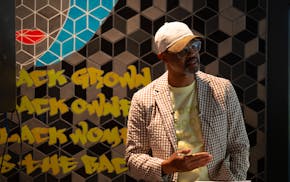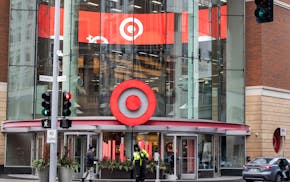It's amazing the worst inflation in more than 30 years was brought under control without a big jump in unemployment and, so far, without recession.
The Federal Reserve did it, right?
Well, this may sound a little braggy, but they couldn't have done it without you and me.
Americans took Federal Reserve policymakers at their word that they would make money expensive to borrow and keep it that way until economic activity slowed down. With our money decisions, some large but most small, we reduced our spending and borrowing at work and home.
Last Wednesday, the Federal Reserve's rate-setters voted to begin dropping rates and said they will keep doing it. Money is becoming less expensive.
One of the first lessons of macroeconomics is that the rate of inflation has an inverse relationship with the level of unemployment. Yet this time, the whole monetary cycle happened without the trade-off associated with raising rates. To be specific, if the Fed was going to push inflation down, then unemployment would have to go up.
After the Fed raised the nation's main interest rate from near zero to 5.3% in just over a year, inflation dropped from a peak of 9% in mid-2022 to 2.5% today.
Unemployment, which was 4% at the start of 2022, actually fell for most of the time since, only climbing back above 4% in June and to 4.2% last month.
In the 1960s and 1970s, some economists at the University of Minnesota and Federal Reserve Bank of Minneapolis theorized this could happen. They said inflation could be wiped out with little pain if the efforts to do so are credible.
Their ideas came to be known among economists as "rational expectations." They helped economists Robert Lucas and Thomas Sargent win Nobel Prizes later in their careers, when they had moved on from Minnesota.
The current head of research at the Minneapolis Fed, Andrea Raffo, said those insights are now woven into how the Fed works. He cited its far more open communication with the public and the way policymakers since 2022 frequently said they wanted inflation to return to a target of 2%.
"It was so important that it was repeated over and over and over," Raffo said in an interview earlier this month. "That was a way to do inflation expectation management. A key insight from the rational expectations revolution is monetary policy is as much about action as it is about information and managing expectations."
He added, "In a sense, the results of the rational expectations revolution are deeper. They shaped the institutional framework and the mindset of the policymakers in a way that today we take almost for granted, but obviously in the 70s was not the case."
Of course, inflation didn't come down just because Americans believed the Fed's rate-setters. They also recognized the inflation of 2022 and 2023 was an effect of the economic disruption from the coronavirus pandemic. Demand plunged, then roared back so quickly the world's factories and transporters needed time to catch up, creating a period when prices rocketed upward.
Art Rolnick, a former research chief at the Minneapolis Fed whose early career overlapped with Sargent's at the University of Minnesota, said other economists initially dismissed the rational expectations theory because central banks a half century ago had not built a track record of trying to control inflation.
Running through the list of Fed leaders since the 1970s, Rolnick said, "Over the years now, because of Volcker and continued with Greenspan, Bernanke, Yellen and now Powell, there's been a commitment that we will lower inflation and keep it low. That's the best thing we can do for the economy. And it looks pretty good right now for that theory."
Tyler Cowen, the polymath economist at George Mason University, called it early, with a column in July 2023 for Bloomberg headlined "Divided Public Believed Enough in Fed to Avoid A Recession." He wrote, "If the central bank announces a lower inflation target, and most people believe the central bank, wages and prices adjust in rough sync with demand."
Fed Chair Jerome Powell didn't mention the importance of expectations management until last month. In a speech to other central bankers and economists at their annual gathering in Jackson Hole, Wyoming, Powell said the rational expectations theory hadn't been tested in more than 20 years because there's been no significant inflation in that time. "It was far from assured" people would believe the Fed, or "anchor" their expectations, Powell said.
"Disinflation while preserving labor market strength is only possible with anchored inflation expectations, which reflect the public's confidence that the central bank will bring about 2% inflation over time," Powell said. "That confidence has been built over decades and reinforced by our actions."

Ramstad: Gov. Walz, things are not getting done in Minnesota

Ramstad: AI is English-centric, but it's picking up Hmong quickly

Ramstad: Minneapolis' Camden neighborhood is rising. Houston White wants to keep it that way.

Ramstad: Minnesota's big businesses are in crisis with a common problem

